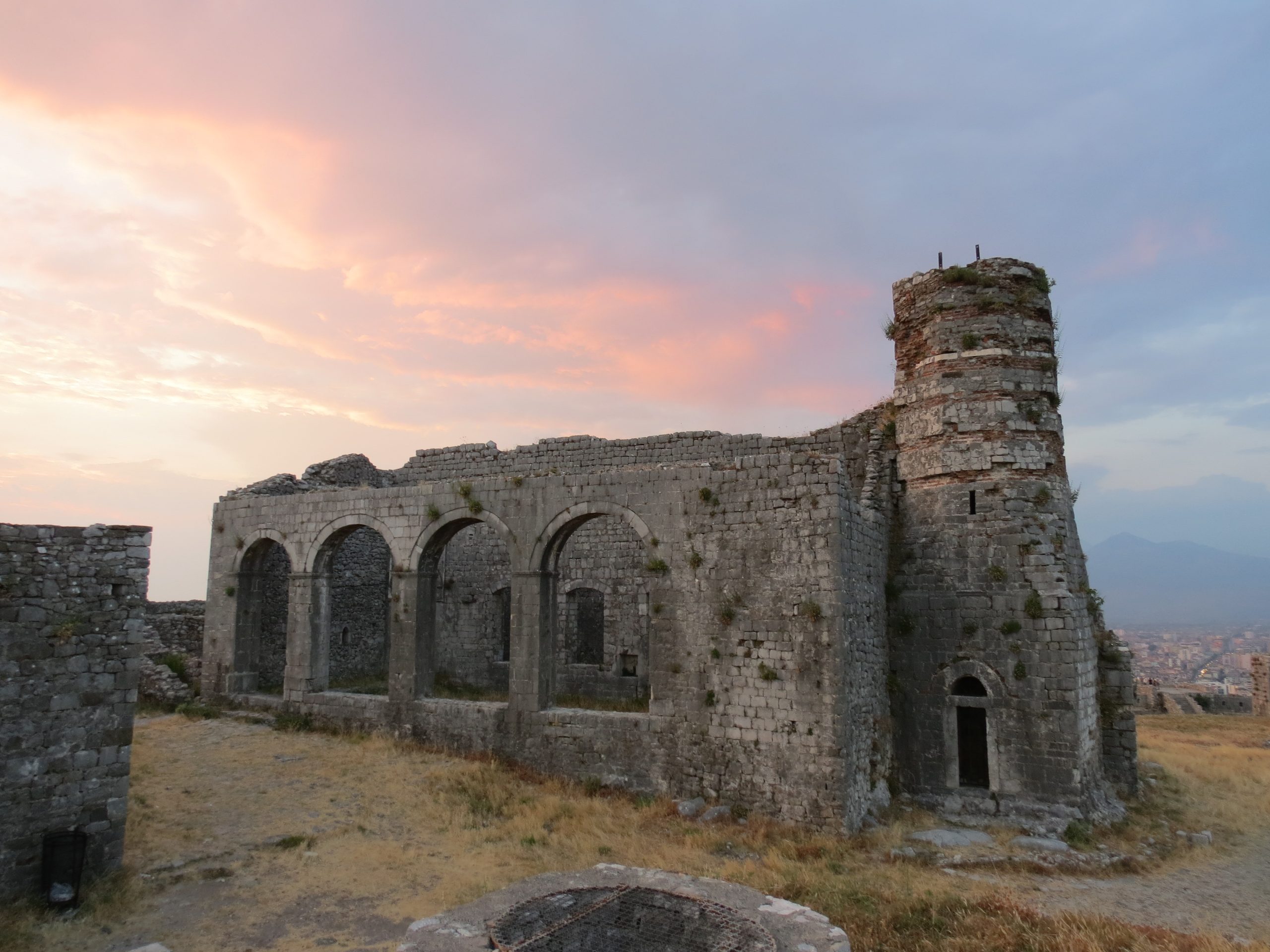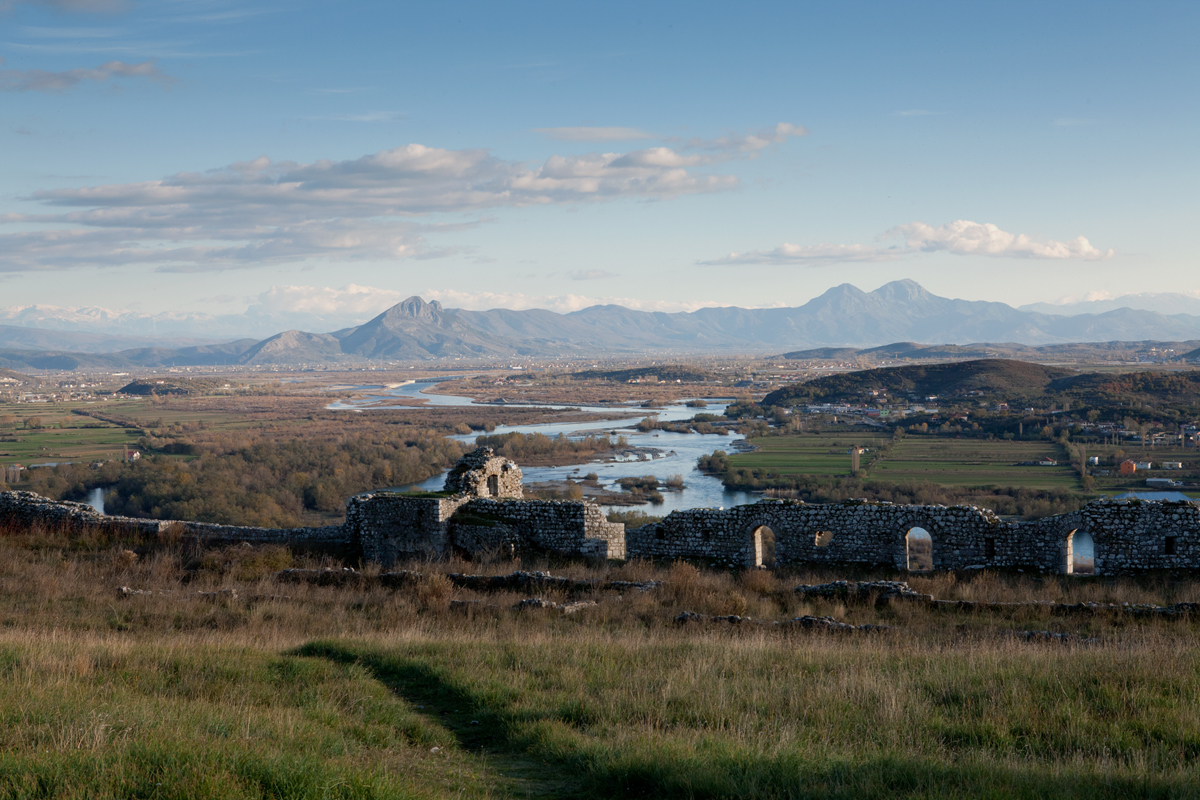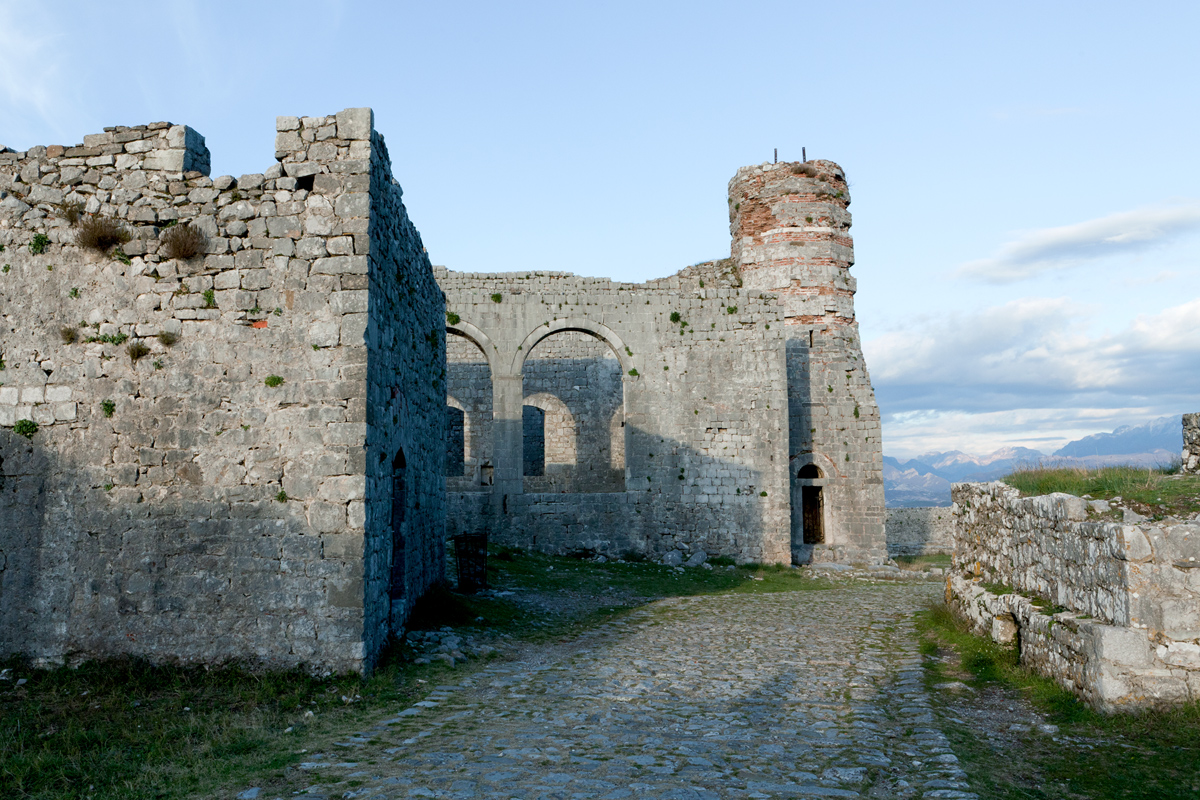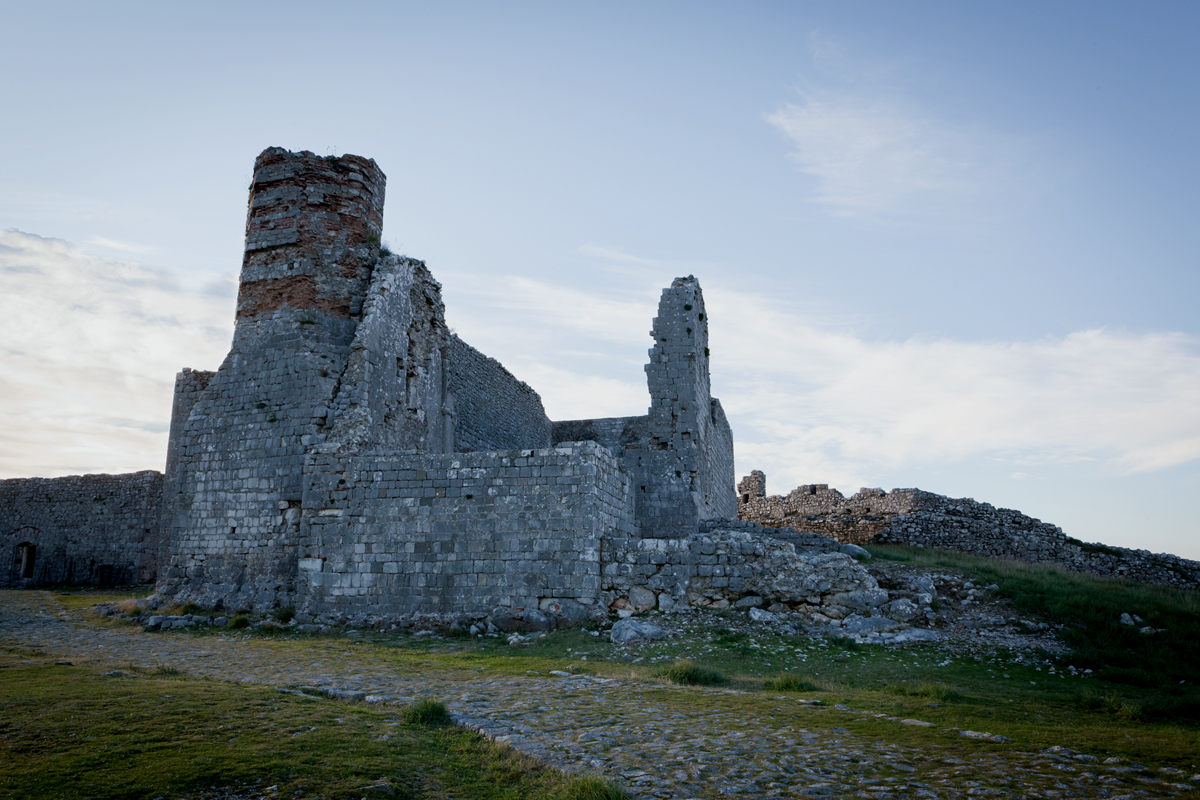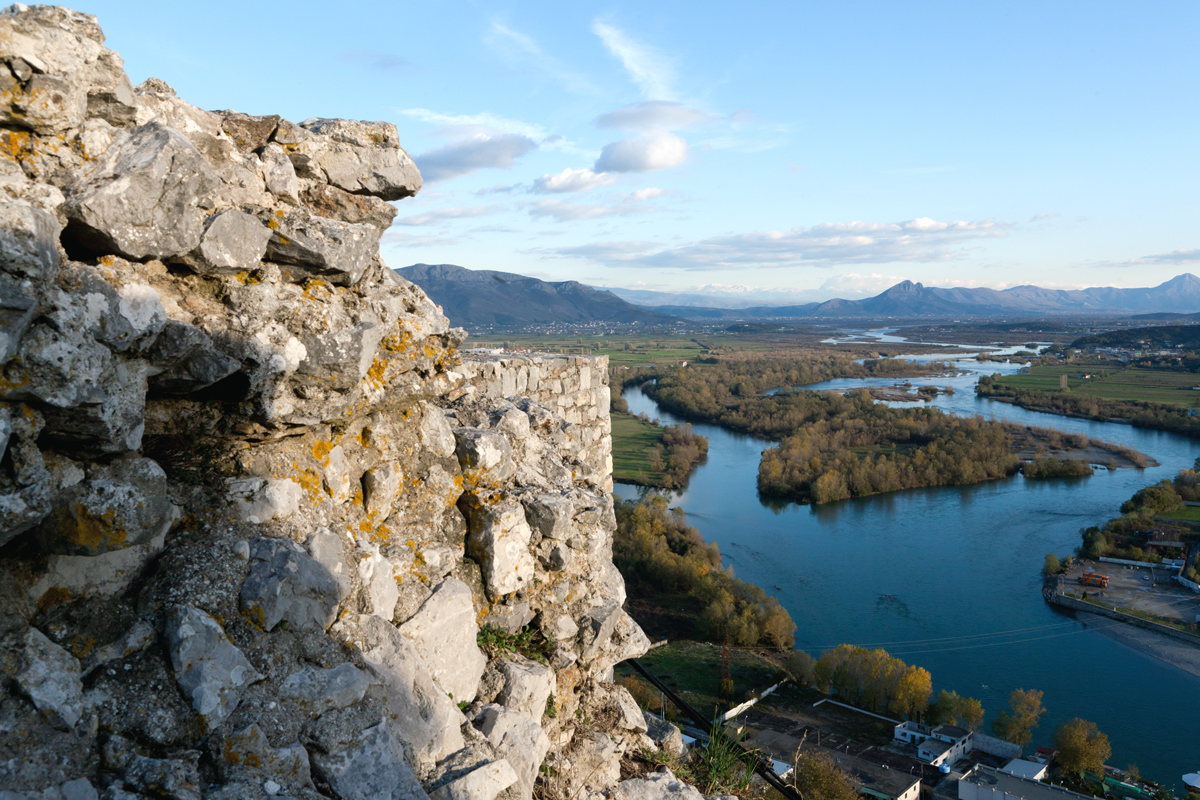Kalaja e Rozafës
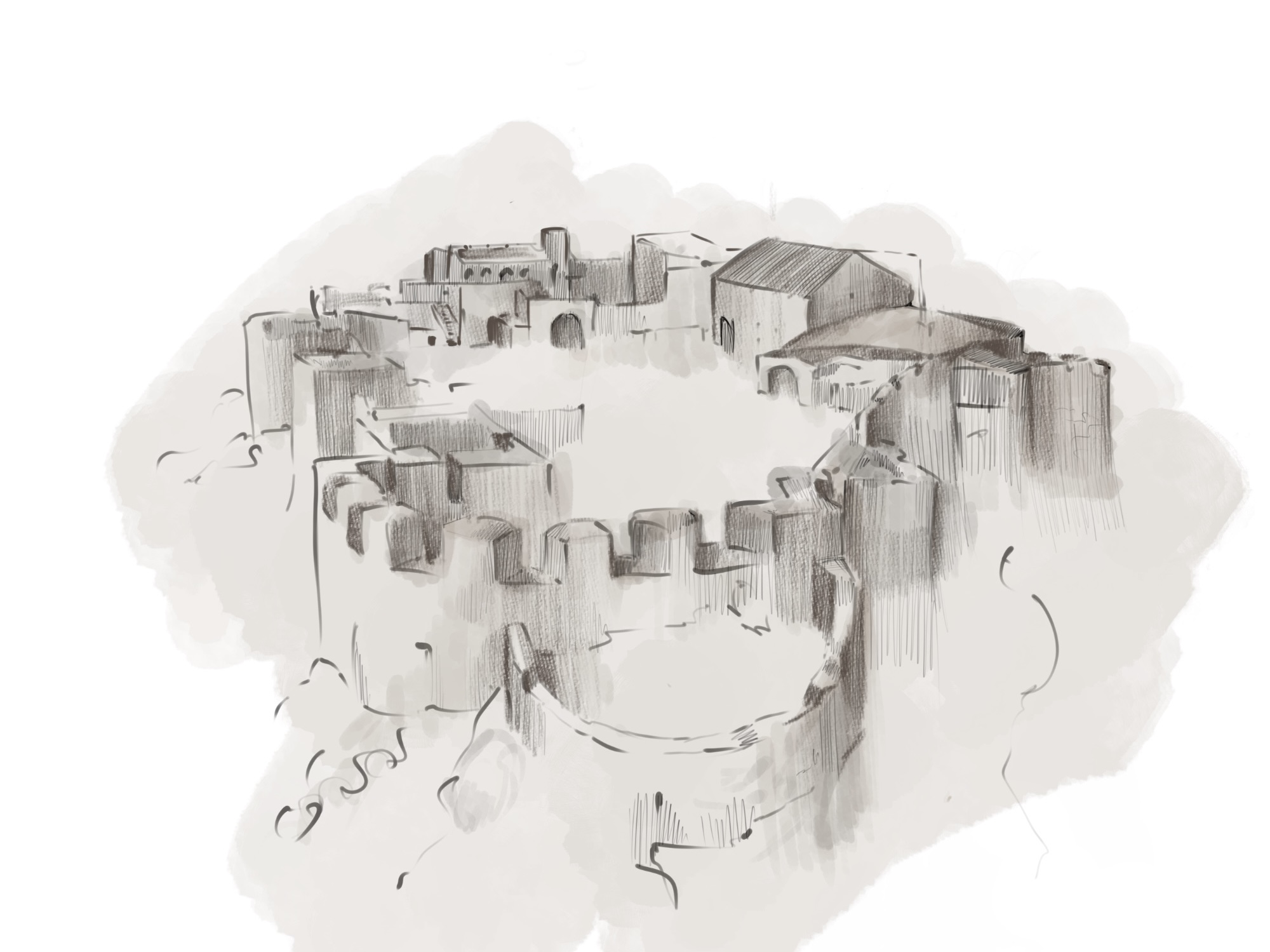
• Pas hyrjes në barbakan ndodhet oborri i parë, ku gjendet trakti i murit ilir të shek.IV para Krishtit, si dëshmia më e vjetër e kalasë. Gjithashtu përgjatë oborrit të parë gjenden dhe rrënojat mesjetare të cisternave, kullave të Balshajve apo banesave veneciane.
• Në oborrin e dytë, pranë mureve rrethuese në veriperëndim të kalasë, gjenden rrënojat e një objekti i cili meriton vemendje të veçantë, xhamia e Sulltan Mehmet Fatihut e (shek.XVI – XIX). Rrënojat e xhamisë u braktisën përfundimisht në vitin 1865. Në të njëjtin oborr janë edhe rrënojat e burgut otoman, kazerma e depos së municioneve që datojnë rreth shek.XVI – XVII, si dhe depozitat katërkëndëshe të mbuluara me qemer.
• Kalaja përfundon në oborrin e tretë, ku spikat një godinë trekatëshe e kohës veneciane, e njohur si “Kapitaneria”, e cila shërbente si rezidencë e sundimtarit venedikas. Në këtë godinë gjendet sot Muzeu i Kalasë së Shkodrës, ku flitet për të shkuarën 4000 vjeçare të kalasë si edhe etapat dhe familjet më të rëndësishme mesjetare të qytetit të Shkodrës.
Përgjatë kalasë shfaqen pamje të mrekullueshme të Liqenit të Shkodrës, të lumenjve e të maleve të shumta përreth dhe në jugperëndim të saj në oborrin e tretë, si një spektakël vërehet pika e takimit të lumenjve Drin, Kir dhe Buna teksa gërshetohen së bashku. Rozafa është zanafilla e një qyteti të lashtë e legjendar. Gjithçka fillon me një legjendë, gjithçka vazhdon si në legjendë.
The Kanina Castle stands on a hill that contains the ruins of an old city, that of Kanina, located 6 km from the coastal city of Vlora.
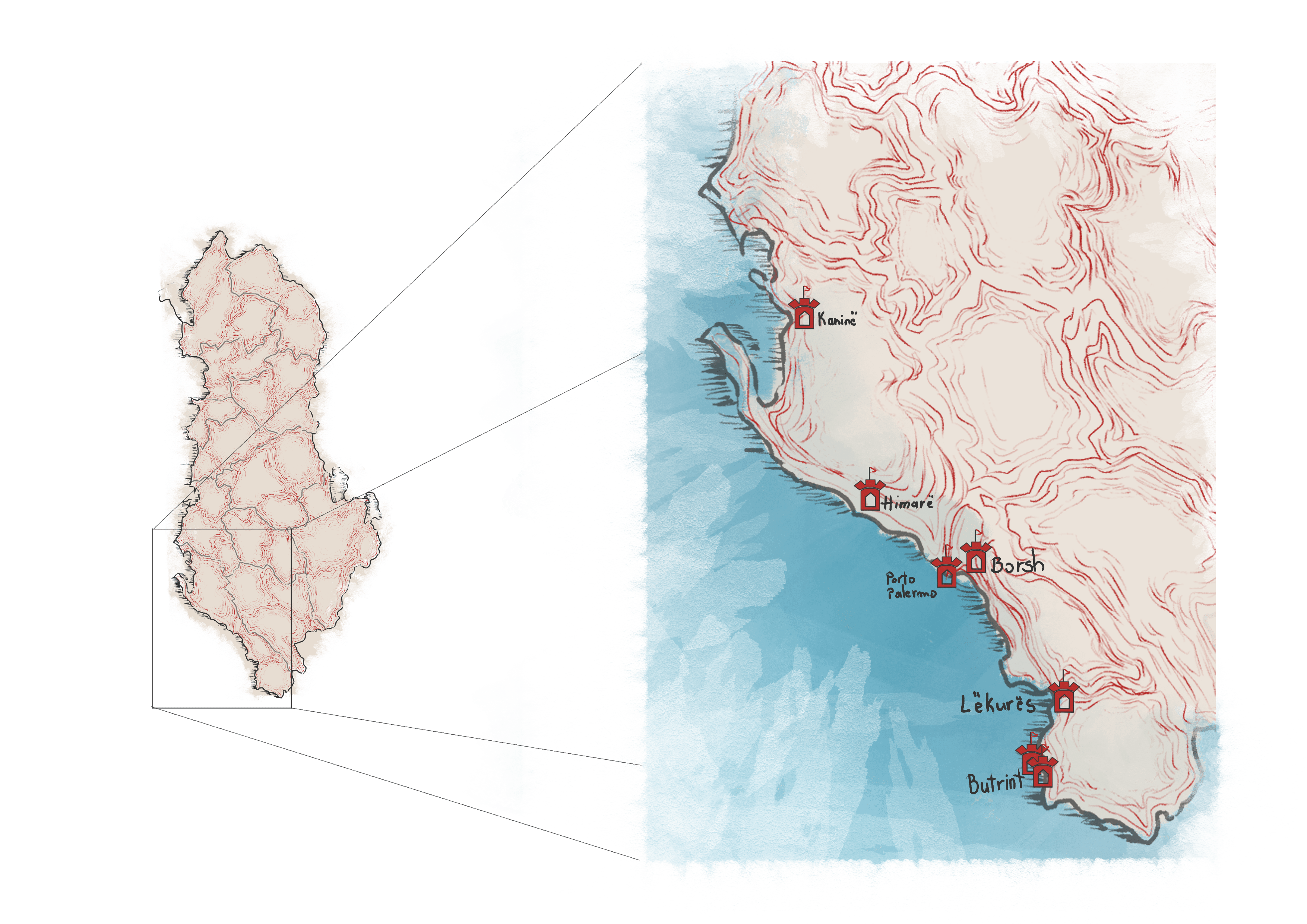
Archaeological evidence clearly shows that the Illyrians, our ancestors, were the first to build the castle, which has been continuously inhabited ever since. The castle was later rebuilt, like many others, by Emperor Justinian and subsequently by other Albanian feudal lords until the late Middle Ages.

Kanina has served over the centuries as a military fortress and a fortified city. It was also the residence of the Aranti family. The Illyrian walls of the castle resemble the construction techniques used in the walls of Amantia and Byllis. The shape of the ruins clearly indicates a fortified town.
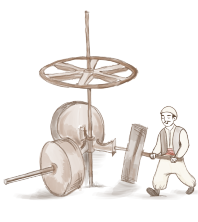
The favorable geographical position overlooking the Vlora River valley and the roads connecting the coastal area with the country's interior made Kanina Castle one of the most important historical sites in Albania, both as a fortress and as a feudal residence. This was also due to the favorable climate, fauna, and local traditions.

The surrounding wall, which encloses the highest part of the hill, is 1 km long. The castle had over 14 towers and several walls built at different times. Within the enclosure, there were residential houses, buildings for the garrison, ammunition depots, cisterns for water supply, as well as palaces, religious buildings such as churches and mosques, and more.

